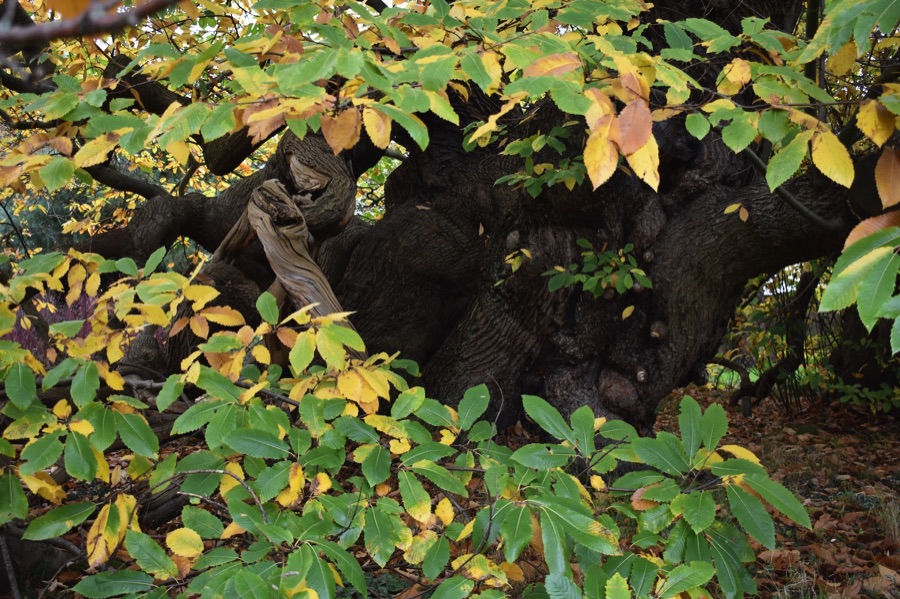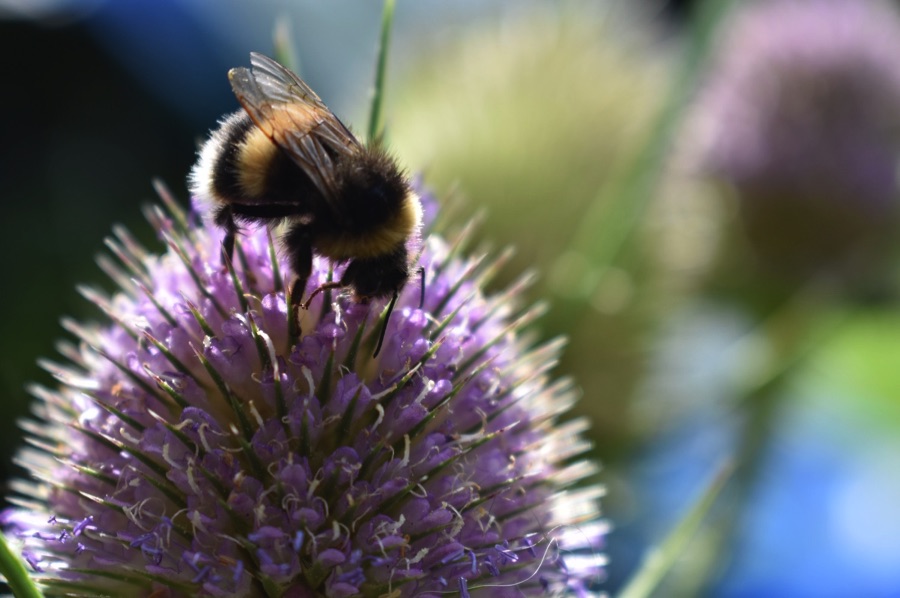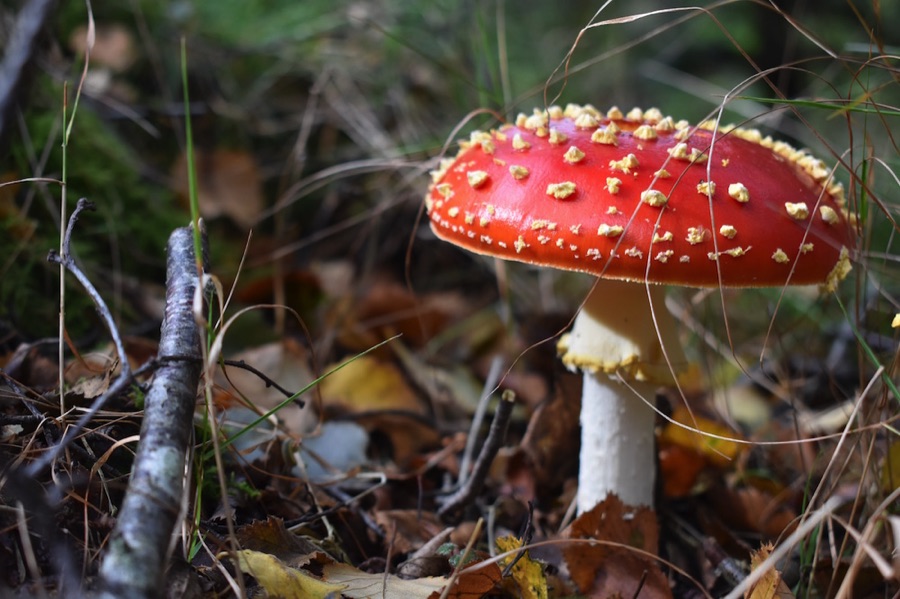
Citizen science
Citizen science surveys connect people with nature – and provide vital data that helps conservation organisations protect plants and animals
Above: ancient sweet chestnut tree at Doddington Hall, Lincolnshire
If you want to help nature this year, why not take part in a nature survey?
Nature surveys are an important part of what is known as 'citizen science', and encourage members of the public to contribute to scientific research – often by collecting data about a particular species.
These surveys help conservation organisations find out more about how mammals, birds, insects and plants are coping with challenges such as extreme weather and habitat loss. This information can then inform decisions about the best ways to help struggling species survive and thrive.
Citizen science surveys are also an excellent way for people to connect with nature and learn more about the plants and animals they're observing.
There are plenty of projects you can get involved with throughout the year – so put these citizen science surveys in your diary!
Big Garden Birdwatch
Big Garden Birdwatch is the world's largest garden wildlife survey, and last year more than half a million people took part.
The survey collects vital data that helps the RSPB gain insights into how garden birds are faring. Past surveys have highlighted some of the challenges facing our feathered friends, from climate change to disease.
Greenfinches and chaffinches, for example, are particularly susceptible to a disease called Trichomonosis. It can be spread by contaminated food and drinking water, and has caused some bird populations to crash in recent years. Cleaning bird feeders regularly and offering fresh water helps stop the spread of this deadly disease.
It's easy to take part in the Big Garden Birdwatch. Just spend an hour at any time during the last weekend of January, watching the birds in your garden, park or local green space – and make a note of all the different species you see.
You can download a free identification sheet from the RSPB website, and submit results online or by post. Even if you don't see many birds, or none at all, you should contribute – all submissions will help to build up a detailed picture of garden birds across the UK.
PondNet Spawn Survey
Frogspawn usually appears in ponds, ditches and puddles in February – but it can appear as early as December. So look out for spawn any time between December and May, and send in the details of any sightings.


This data helps Freshwater Habitats Trust to better understand the breeding habits of amphibians. Submit your sightings, and share your spawn sightings on social media, using the hashtag #SpawnSurvey.
Big Butterfly Count
This Butterfly Conservation survey is easy to take part in – and what could be nicer than spending some time observing some of the UK's most beautiful insects? It takes place in July and August – but you can submit your butterfly and moth sightings at any time of year.

To take part in the Big Butterfly Count, spend 15 minutes looking out for butterflies or moths – this could be in a garden, park, woodland, field or near a hedgerow. Record the species you see then submit your results.
In 2023, the red admiral was the most commonly seen butterfly during the survey. Also look out for peacocks, tortoiseshells, commas and painted ladies. If you can, choose a sunny day to do your Big Butterfly Count as butterflies are more likely to be seen during dry, bright weather – although, as with most citizen science surveys, all results are valuable, even if you don't see anything at all.
BeeWalk
BeeWalk is the Bumblebee Conservation Trust's national recording scheme to monitor the abundance of bumblebees across the UK.
To take part, you will need to commit to about an hour of walking once a month from March to October. Choose a route that's about 2km long and look out for bumblebees as you walk. Submit your sightings to the BeeWalk website. You need to complete the same route each month.

The Bumblebee Conservation Trust website has some excellent identification tools to help you recognise the different species – you'll need to know your white-tailed bumblebee from your bilberry bumblebee before you submit your sightings.
Adders
There are three different snake species in the UK: grass snakes, smooth snakes and adders.
Adders live in grasslands, woodland, heaths and moors, and are recognisable by their grey or reddish-brown colouring, distinctive dark zig-zag stripe and red eyes. If you're lucky enough to spot one while out for a walk – it's a secretive creature that tends to stay hidden and has highly effective camouflage – Amphibian & Reptile Conservation would like to hear about it. Any data collected helps improve understanding about this fascinating, elusive reptile. Report sightings at www.recordpool.org.uk.


Adders are a protected species in the UK, and it's illegal to harm this species. They're also the UK's only venomous snake – and for both these reasons you should avoid disturbing or touching them.
Ancient Tree Hunt
Spotted an old tree while out and about? Get involved with the Ancient Tree Hunt, and help create a nationwide record of our oldest trees. Ancient trees are an important part of our heritage, and provide a fantastic habitat for all sorts of wildlife.

Ancient trees can include oak, beech, Scots pine, rowan, birch, hawthorn, sweet chestnut and ash. If you think you've seen one, take a photo and make a note of the tree's location, then submit your sighting. The Ancient Tree Inventory includes a map of ancient tree locations across the UK, and can also be used to look up ancient trees in your local area.
Woodland Trust's Nature's Calendar
Record nature sightings year-round with Nature's Calendar, an ongoing survey that contributes to biological records that date back to 1736.

Woodland Trust wants to hear about observations of the natural world, from when the first oak leaves emerge in spring to autumn sightings of fly agaric fungi. Collating this type of information provides valuable insights into how many different species are affected by rising temperatures related to climate change.
Earthworms
Earthworms are vital for healthy soil, and the Earthworm Society of Great Britain and Northern Ireland aims to promote and support scientific research so that earthworms and their environment can be better understood.

You can submit sightings to the organisation's Earthworm Recording Scheme at any time of the year – the data collected helps the Earthworm Society to learn more about the distribution of earthworm species across the UK.
To take part, make a note of the species you've seen (visit the Earthworm Society website for help with identification), its location and time of sighting.
Whales and Dolphins
The Hebridean Whale and Dolphin Trust's Whale Track Community Sightings Network encourages residents, local wildlife operators and visitors to the area to report their sightings of whales, dolphins and porpoises on the west coast of Scotland.

This information contributes to our understanding of where and when particular species occur, and responds to reports of stranded animals.
Sightings can be submitted all year round on the Whale Track website.
Saving Scotland's Red Squirrels
Seen a squirrel? Saving Scotland's Red Squirrels wants to hear about red or grey squirrel sightings, wherever they've been seen – in woodland, a park or even your back garden.

Saving Scotland's Red Squirrels is working hard to protect Scotland's remaining red squirrels from the threat of extinction, and all squirrel sightings help conservation charities focus on the areas where red squirrels are most at threat from the spread of non-native grey squirrels. Thanks to these efforts, in many places red squirrels are now making a comeback.
Living with Mammals
Towns and cities are home to a surprising number of mammals, from tiny mice to larger animals such as deer.
The People's Trust for Endangered Species Living with Mammals survey records numbers and monitors changes in mammal populations. This data offers insights into the health of urban green spaces – and has helped find out vital information about mammal species, for example crashes in hedgehog numbers in urban areas within the past 20 years.
You can go mammal spotting in any green space, such as a garden, allotment, park or churchyard – but the site must be within 200 metres of a building. Record the mammals you see each week, and any signs they might leave behind, such as droppings or footprints. For more information and to submit sightings, visit the Living with Mammals website.

Little Green Space January 2024
Little Green Space is a non-profit project sharing solutions to the nature and climate crises, and offering inspiration for a greener lifestyle. If you like our content, please help keep us going with a small donation!
Ads/Affiliate links

